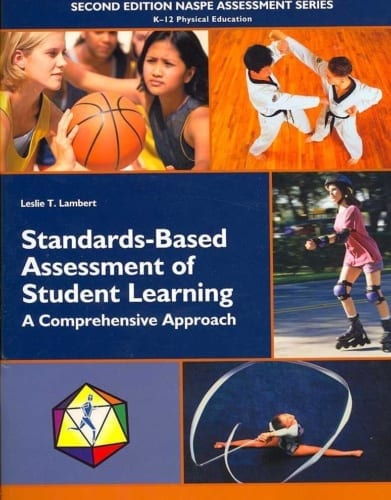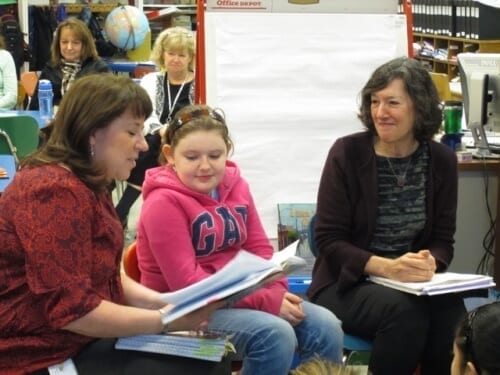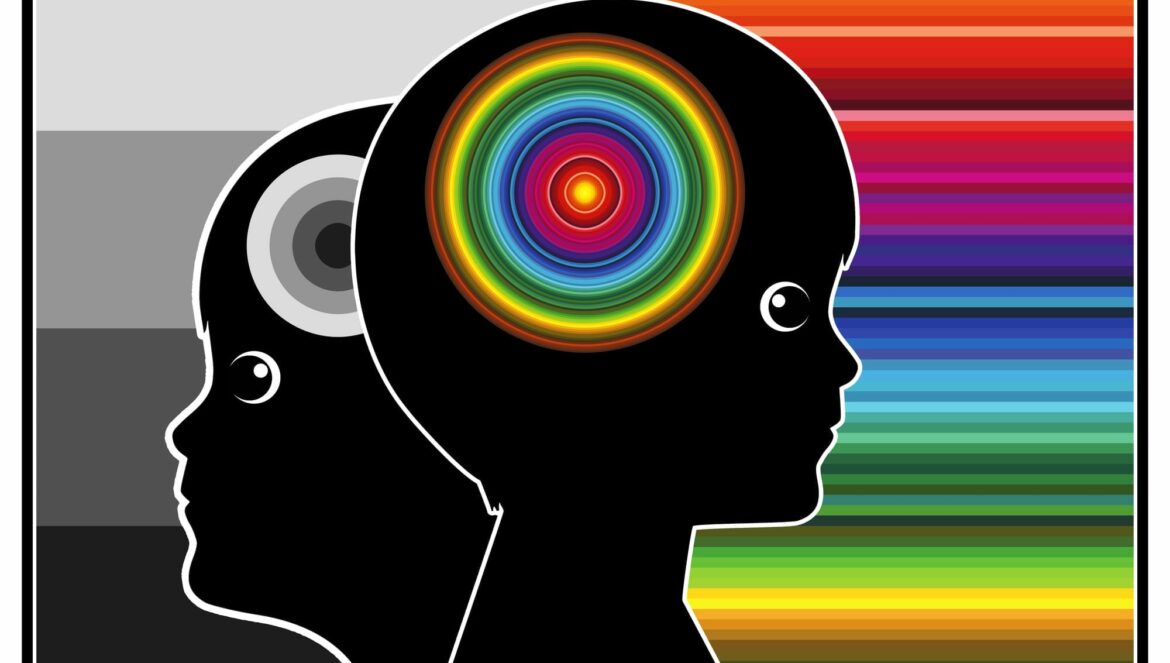How Educators and Students Can Measure Success Along the Way
By Kathy Dyer
 In her book Standards-Based Assessment of Student Learning: A Comprehensive Approach, Leslie Lambert offers a beautiful explanation of the deep interconnectedness between assessment and learning in the classroom. She notes that “anyone observing the class should not be able to tell where instruction ends and assessment begins,” invoking the powerful idea that, in its best sense, assessment is learning.
In her book Standards-Based Assessment of Student Learning: A Comprehensive Approach, Leslie Lambert offers a beautiful explanation of the deep interconnectedness between assessment and learning in the classroom. She notes that “anyone observing the class should not be able to tell where instruction ends and assessment begins,” invoking the powerful idea that, in its best sense, assessment is learning.
This happens to be my favorite kind of assessment, in that assessment becomes a tool for advancing learning rather than just for measuring learning. The teacher feedback that assessment generates, when effectively directed to learners in this way, helps them access whatever the task and learning objectives are — and illuminates the learning path to enable students to plot their own way. By empowering learners in this manner, formative assessment also contributes to building a culture of learning in the classroom, one in which students are engaged and motivated to learn.
In this context, a strong culture of learning is based on a sense of collaboration between you and students. As journalist Katrina Schwartz describes on KQED’s education blog MindShift, when assessment and learning merge in a mutually reinforcing manner, it “makes it easier for teachers and students to become partners in learning, giving students ownership over their success and asking them to show responsibility for improvement.” This idea resonates with me and my interest in the connections between formative instructional practices and the ways that students can transform themselves into self-regulated learners.
Done well, formative assessment can be the backbone of a vibrant partnership between you and learners, but too often formative assessment is not structured as it should be. Many classroom discussions consist of lower-order questions that only a few motivated students answer. These questions aren’t rich enough to provide detailed information about student learning because participation is frequently composed of voluntary responses rather than systematically collecting responses from all students in the class. Without eliciting feedback from every student in the classroom, you cannot effectively determine that all students are, indeed, learning; instead, you run the risk of leaving some students behind, which defeats the purpose of effective formative instructional practices. When all students are engaged, though, and formative assessment practices are robust, you can better determine who understands the material and who needs a little extra help, and learners are inspired to self-regulate and own their success.
 As I noted earlier, teacher feedback is a critical component of assessment and is profoundly valuable and empowering for students. However, providing constructive feedback is not always easy, especially when grades are involved. Students can get caught up in the grades they receive and may not focus on the comments or suggestions you make. And while we understand that grades serve as the benchmarks that parents, and ultimately students, need, you can use strategies along the way to help students receive the valuable feedback needed to move their learning forward. These strategies may include comment-only marking and symbol marking — which uses plus, minus, and equals signs (or up and down arrows) to indicate how students’ performance compares with previous assignments. These types of strategies can be effective alternatives to letter grades.
As I noted earlier, teacher feedback is a critical component of assessment and is profoundly valuable and empowering for students. However, providing constructive feedback is not always easy, especially when grades are involved. Students can get caught up in the grades they receive and may not focus on the comments or suggestions you make. And while we understand that grades serve as the benchmarks that parents, and ultimately students, need, you can use strategies along the way to help students receive the valuable feedback needed to move their learning forward. These strategies may include comment-only marking and symbol marking — which uses plus, minus, and equals signs (or up and down arrows) to indicate how students’ performance compares with previous assignments. These types of strategies can be effective alternatives to letter grades.
Regardless of the strategy you use, make sure your feedback is specific to the quality of a student’s work, is designed to promote thinking and provides clear guidance on what to do next. Perhaps even more important than delivering the feedback itself, you have to establish routines and offer time in class for students to use the feedback and to ensure that they are partnering with you in their learning.
The feedback model advanced by John Hattie and Helen Timperley is simple and effective. Use these three questions to frame the feedback you give learners:
- Where is the learner going? Make sure that the learning targets are clear and specific so that you can focus feedback on them.
- How is the learner going? Frame the feedback as if it were criterion-referenced, focused on what success would look like for a specific task.
- Where to next? Help learners develop deeper understanding, more self-regulation, and more clarity about what they know and don’t know.
 If you are practicing responsive instruction, then you will plan the time to use the feedback as part of the lesson time. Facilitating the use of the feedback received provides learners that “practice time” to improve. If you need to, think of it as homework (which is a whole other topic) that students do in class. What good is the feedback to students, if they a) don’t understand it and b) can’t use it? By planning time in class to use feedback, you are allowing learners to access peers as resources as well as you. It makes the learners’ use of the feedback more effective.
If you are practicing responsive instruction, then you will plan the time to use the feedback as part of the lesson time. Facilitating the use of the feedback received provides learners that “practice time” to improve. If you need to, think of it as homework (which is a whole other topic) that students do in class. What good is the feedback to students, if they a) don’t understand it and b) can’t use it? By planning time in class to use feedback, you are allowing learners to access peers as resources as well as you. It makes the learners’ use of the feedback more effective.
Effective formative assessment is, in my mind, fundamental to achieving this ideal of assessment as learning. The strategies, techniques, and tools that constitute formative assessment make it possible for both you and learners to continually gather evidence of learning in the classroom and use that evidence to adapt instruction and learning moment-to-moment and day-by-day. More specifically, formative instructional practice enables you and students to partner in collecting critical information about learning progress, uncovering opportunities for review, providing feedback, and suggesting adjustments to both instruction and student learning.
Author
Kathy Dyer is a senior professional development specialist for NWEA, where she designs and develops learning opportunities for partners and internal staff. Follow her on Twitter.
- The Learning Counsel – Ditching the Report Card
- Ed Week – The Science of Learning and the Value of Educators
- Stanford Social Innovation Review – Education is Changing—It’s Time Assessment Caught Up
